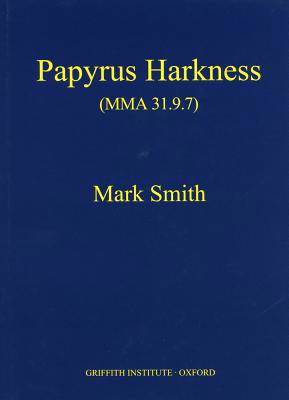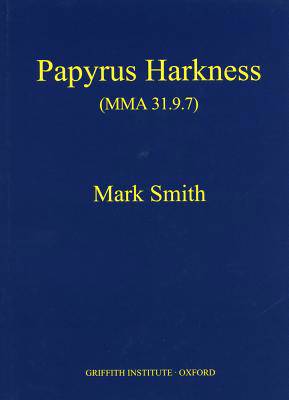
- Retrait gratuit dans votre magasin Club
- 7.000.000 titres dans notre catalogue
- Payer en toute sécurité
- Toujours un magasin près de chez vous
- Retrait gratuit dans votre magasin Club
- 7.000.000 titres dans notre catalogue
- Payer en toute sécurité
- Toujours un magasin près de chez vous
Description
Papyrus Harkness (MMA 31.9.7) preserves a long, virtually undamaged text written in the demotic script. The original owner and beneficiary of the papyrus was a woman called Tanaweruow. Born into a prietly family, she lived in the town of Pernebut in Middle Egypt. After her death, which occurred on 15 February 61 A.D., an elaborate series of mortuary rituals were performed for her benefit by her father and others. Papyrus Harkness preserves a complete record of the words recited during these ceremonies, in which it would have been employed by those officiating. After its initial use, the papyrus was buried along with Tanaweruow in her tomb, where the reanimating and protective powers of the words with which it was inscribed were supposed to remain effective for all eternity. The manuscript was disinterred by a person or persons unknown, and made its way through untraced channels to the Cairo antiquities market where it was purchased by Howard Carter in the spring of 1922, not too long before his discovery of the tomb of Tutankhamun. In 1924, he sold it to the Metropolitan Museum of Art in New York, in whose collection it has remained ever since. The present volume is the first complete edition of Papyrus Harkness. The introduction describes the manuscript's appearance and state of preservation, summarises the available information concerning its original owner and her family, analyses the text's contents, their structure, composition, and ritual significance, and outlines its most salient grammatical and stylistic features. This is followed by a transliteration and translation of the papyrus and a parallel version of part of it preserved in another manuscript, P. BM 10507, a line by line commentary, a bibliography of works cited, and a full glossary reproducing all the words which occur in the text in facsimile. The volume concludes with a set of eight fold-out plates with photographs of Papyrus Harkness.
Spécifications
Parties prenantes
- Auteur(s) :
- Editeur:
Contenu
- Nombre de pages :
- 386
- Langue:
- Anglais
- Collection :
Caractéristiques
- EAN:
- 9780900416842
- Date de parution :
- 31-12-05
- Format:
- Livre relié
- Format numérique:
- Genaaid
- Dimensions :
- 215 mm x 302 mm
- Poids :
- 1764 g







